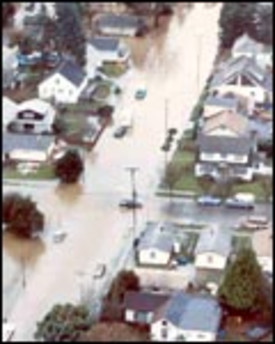Do You Know Your Flood Risk?
Call your local emergency management office, building department or floodplain management office for information about flooding. Ask to see a flood map of your community. There may be a projected flood elevation for your neighborhood. This information will help you determine how much water is likely to come in.
FEMA provides copies of flood maps for a nominal fee. Flood maps are also kept on file at your local courthouse, municipal office or library.
A Flood Insurance Rate Map can also be especially useful in helping you identify existing flood hazards and the risks associated with those hazards. They can help homeowners and homebuilders determine the flood zone and Base Flood Elevation of an area. Flood Insurance Rate Maps may be available at your local municipal offices, libraries, or insurance agents.
Your Odds of Experiencing a Flood
The odds may seem like a million to one you’ll ever experience serious flooding. But it happens more than you’d think. In fact, 90% of all presidentially-declared natural disasters involve flooding. Even minor flooding can mean major financial difficulties. Imagine just a few inches of floodwater invading your home. That’s more than enough to destroy floors, damage walls, and ruin appliances – costing you thousands. Live in a high-risk area? You’ve got a 1 in 4 chance of flooding during the life of your 30-year mortgage. You’re also five times more likely to experience flooding than fire. And you don’t have to live in a high-risk zone to be a victim. Almost 25% of all flood claims come from low- to moderate-risk areas.




























